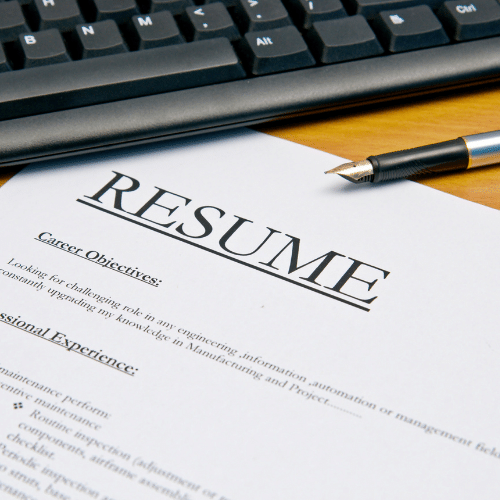Resume tip number one: Read this list on how (and how not to) make a good resume!
There are a lot of “resume dos and don’ts” lists out there. If you want to learn how to make a resume stand out, then you should avoid advice like, “include your previous salary information,” and “the reason you left your last job.”
Instead, take advice from a real staffing agency. Learn how to create a good resume that is shaped in such a way that it shows the best of you in the context of the job you’re applying for.
Do Customize Resume for Job You’re Applying
You probably don’t want to hear it, but every resume you submit should be tailored to the job. It’s okay to have a master work resume to refer to each time you apply, but a great resume tip is to align your resume with the job description provided by your potential employer.
Each job description – even if it’s in the same industry for the same job title – will have different requirements (especially if their software is proprietary). Plus, each company culture is different. Customizing your “objective” or “summary” to speak to those values is a good idea.
Don’t Make Typos in Your Resume

This may seem like an obvious resume tip, but you would be amazed how often typos in resumes are overlooked. If you want your resume to stand out to a hiring manager then don’t reveal a weakness for details by overlooking typos, spelling and punctuation errors.
With each resume you create, the risk of an error goes up. Don’t just rely on spell check. Have another set of eyes, like a friend or family member, look at your resume to make sure it’s perfect.
Do Include Accomplishments in Resume
“Objective,” “Experience,” “Skills” and “Education” used to be the four sections — and only sections — that were included in resumes. If you’re wondering what creative things to add to a resume outside of these cookie cutter sections, include a section that highlights everything you’ve accomplished.
Don’t go overboard, this section should be small but detailed. Add statistical data if possible. Companies love numbers that highlight your success, such as Return On Investment (ROI) or something to do with revenue.
Don’t Include Too Much Education Information
Folks with advanced degrees such as a Masters or Doctorate (or relevant certifications) will have a far more robust education section than most. Everyone else should be wary of an excessively long education section. In fact, it should be the shortest section of your resume.
Go ahead and include your high school education if you’re still in college, or didn’t go to college, but get rid of it if you did. Instead, include your college, information about your degree. Don’t even bother with your GPA unless it’s specifically asked.

Do Align Technology Skills with Job Description
As technology becomes more embedded in our lifestyle, it plays a bigger role in the jobs we covet. Further, there are few examples of job descriptions that exclude technical requirements, even HR systems are increasingly digital.
Each resume you make should be customized to a single job posting, and the same goes for your tech skills. Pick the most important skills, and the technology you have experience with. Include your proficiency, and number of years working with those particular software systems.
Don’t Use Obvious Tech Skills in your Resume
A lack of proficiency in technology is hard to hide. Some job applicants will fill-in-the-blank by adding inconsequential, or irrelevant skills. For example, it’s probably assumed that you’re “proficient at using the internet.” lol!
The same goes for “Microsoft Word,” which is easy to use, and certainly not as useful as “Microsoft Office Suite.” That is unless it’s listed in the job description, which you should be referring to in order to decide which ones you’ll choose.
Do Use the Right Words
Have you ever heard of an Applicant Tracking System (ATS)? Whether you have or not, if you’ve applied for a job in the past few years there’s a good chance an ATS was used. They are so popular at weeding out applicants that 75% of all resumes are never read by human eyes.
It’s not only scanning for errors, but also the right keywords and phrases. So, you want to be contextual, using words such as “conceptualized” and “communicated” for creative roles, “converted” and “generated” for marketing jobs or “advanced” and “automated” for tech positions.
Don’t Copy Language or Use Clichés
The best resume tips involve using the job description as your guide. However, don’t overdo it by copying words from it and pasting them in your resume! If the job description says they want a “fast learner,” then don’t put that in your skills section. Instead, put something like, “became proficient in one month.”
This goes for clichés and jargon too. A good piece of resume advice is to be detailed. Phrases like “move the needle,” or “hard worker” don’t really work, and should be replaced with “increased revenue 50%“ or “project managed to completion in one month“ respectively.
Resume writing tips are a dime a dozen, but if you follow the resume advice above, you’ll be ahead of most other applicants. The best resume tip we can give is to put your best foot forward, be honest and use the job description as your reference guide.


